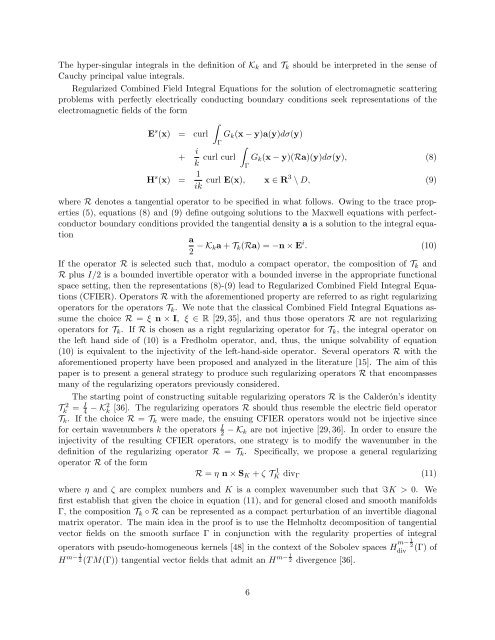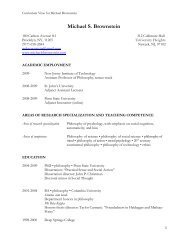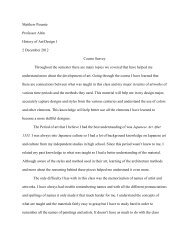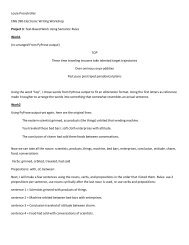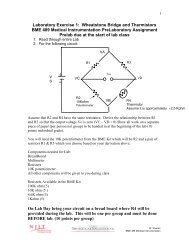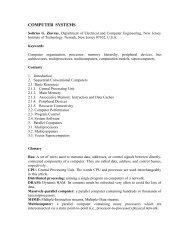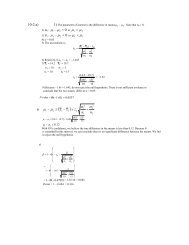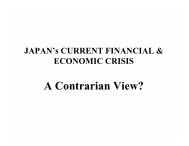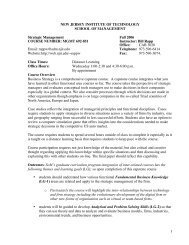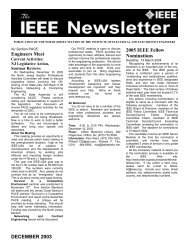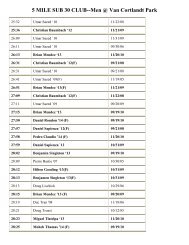Well-conditioned boundary integral formulations for the ... - Njit
Well-conditioned boundary integral formulations for the ... - Njit
Well-conditioned boundary integral formulations for the ... - Njit
You also want an ePaper? Increase the reach of your titles
YUMPU automatically turns print PDFs into web optimized ePapers that Google loves.
The hyper-singular <strong>integral</strong>s in <strong>the</strong> definition of K k and T k should be interpreted in <strong>the</strong> sense of<br />
Cauchy principal value <strong>integral</strong>s.<br />
Regularized Combined Field Integral Equations <strong>for</strong> <strong>the</strong> solution of electromagnetic scattering<br />
problems with perfectly electrically conducting <strong>boundary</strong> conditions seek representations of <strong>the</strong><br />
electromagnetic fields of <strong>the</strong> <strong>for</strong>m<br />
∫<br />
E s (x) = curl G k (x − y)a(y)dσ(y)<br />
Γ<br />
+ i ∫<br />
k curl curl G k (x − y)(Ra)(y)dσ(y), (8)<br />
Γ<br />
H s (x) = 1<br />
ik curl E(x), x ∈ R3 \ D, (9)<br />
where R denotes a tangential operator to be specified in what follows. Owing to <strong>the</strong> trace properties<br />
(5), equations (8) and (9) define outgoing solutions to <strong>the</strong> Maxwell equations with perfectconductor<br />
<strong>boundary</strong> conditions provided <strong>the</strong> tangential density a is a solution to <strong>the</strong> <strong>integral</strong> equation<br />
a<br />
2 − K ka + T k (Ra) = −n × E i . (10)<br />
If <strong>the</strong> operator R is selected such that, modulo a compact operator, <strong>the</strong> composition of T k and<br />
R plus I/2 is a bounded invertible operator with a bounded inverse in <strong>the</strong> appropriate functional<br />
space setting, <strong>the</strong>n <strong>the</strong> representations (8)-(9) lead to Regularized Combined Field Integral Equations<br />
(CFIER). Operators R with <strong>the</strong> a<strong>for</strong>ementioned property are referred to as right regularizing<br />
operators <strong>for</strong> <strong>the</strong> operators T k . We note that <strong>the</strong> classical Combined Field Integral Equations assume<br />
<strong>the</strong> choice R = ξ n × I, ξ ∈ R [29, 35], and thus those operators R are not regularizing<br />
operators <strong>for</strong> T k . If R is chosen as a right regularizing operator <strong>for</strong> T k , <strong>the</strong> <strong>integral</strong> operator on<br />
<strong>the</strong> left hand side of (10) is a Fredholm operator, and, thus, <strong>the</strong> unique solvability of equation<br />
(10) is equivalent to <strong>the</strong> injectivity of <strong>the</strong> left-hand-side operator. Several operators R with <strong>the</strong><br />
a<strong>for</strong>ementioned property have been proposed and analyzed in <strong>the</strong> literature [15]. The aim of this<br />
paper is to present a general strategy to produce such regularizing operators R that encompasses<br />
many of <strong>the</strong> regularizing operators previously considered.<br />
The starting point of constructing suitable regularizing operators R is <strong>the</strong> Calderón’s identity<br />
= I<br />
4 − K2 k<br />
[36]. The regularizing operators R should thus resemble <strong>the</strong> electric field operator<br />
T k . If <strong>the</strong> choice R = T k were made, <strong>the</strong> ensuing CFIER operators would not be injective since<br />
<strong>for</strong> certain wavenumbers k <strong>the</strong> operators I 2 − K k are not injective [29, 36]. In order to ensure <strong>the</strong><br />
injectivity of <strong>the</strong> resulting CFIER operators, one strategy is to modify <strong>the</strong> wavenumber in <strong>the</strong><br />
Tk<br />
2<br />
definition of <strong>the</strong> regularizing operator R = T k . Specifically, we propose a general regularizing<br />
operator R of <strong>the</strong> <strong>for</strong>m<br />
R = η n × S K + ζ TK 1 div Γ (11)<br />
where η and ζ are complex numbers and K is a complex wavenumber such that IK > 0. We<br />
first establish that given <strong>the</strong> choice in equation (11), and <strong>for</strong> general closed and smooth manifolds<br />
Γ, <strong>the</strong> composition T k ◦ R can be represented as a compact perturbation of an invertible diagonal<br />
matrix operator. The main idea in <strong>the</strong> proof is to use <strong>the</strong> Helmholtz decomposition of tangential<br />
vector fields on <strong>the</strong> smooth surface Γ in conjunction with <strong>the</strong> regularity properties of <strong>integral</strong><br />
operators with pseudo-homogeneous kernels [48] in <strong>the</strong> context of <strong>the</strong> Sobolev spaces H m− 1 2<br />
div<br />
(Γ) of<br />
H m− 1 2 (T M(Γ)) tangential vector fields that admit an H m− 1 2 divergence [36].<br />
6


